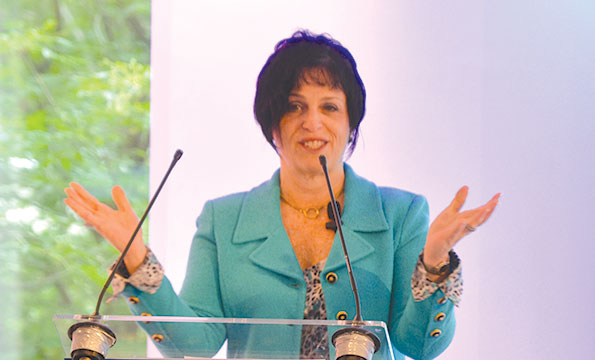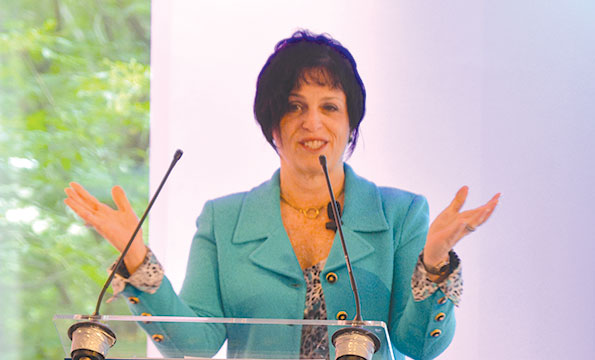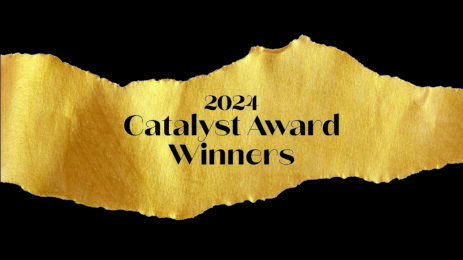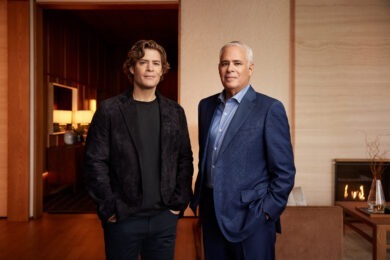
Nadine Vogel, founder and president of Springboard Consulting LLC, estimates that 54 million Americans ages 16 to 65 have a disability that they were either born with or acquired. Many are active members of the workforce who want to participate in offsite meetings and conventions. Legally and morally, event planners must make good-faith efforts to accommodate them.
As a mother of two daughters with special needs, Vogel intimately understands the complexity of the issue. Her Mendham, New Jersey-based firm has helped sensitize and educate the federal government, universities, nonprofits and many major corporations in how to mainstream those with disabilities in the workplace. She believes planners can play a leadership role.
“The disabled are the largest and fastest growing minority in the world—hitting every race and income level. It is incumbent upon planners who bring thousands of people together to give a clear message that says, ‘We get it,’” Vogel says.
When planning an event, she recommends carefully choosing the site because if it does not meet federal Americans With Disabilities (ADA) guidelines, the venue and event host can be sued. While convention centers and large hotels are usually in compliance, smaller historic venues may not be fully accessible.
Preempt potential problems with open communication. “Those with a disability know what they need and will inquire about it. If you don’t know the answer, there is nothing wrong with saying, ‘I’ll check and get back to you.’ But be honest and inform people up front if there is a component of the program that will not be accessible,” Vogel says.
However, strive to accommodate, beginning with the registration process. “Your website needs to be accessible to those who are blind or can’t physically use a mouse or keyboard,” says Vogel, adding that WCAG (Web Content Accessibility Guidelines) 2.0 is the current global standard.
Prior to the event, make sure everyone in your company has had disability awareness training. “You don’t want someone to feel uncomfortable about shaking hands with an individual who has a prosthetic device,” Vogel says.
At the actual meeting, employ technology or services to ensure that all participants have equal access to the content. Vogel believes real-time captioning is an industry best practice. “It helps those with hearing impairments, but also those with learning disabilities, the elderly who may have slower processing time, those for whom English is a second language and attendees participating from a remote environment that could be noisy, such as an airport,” she says.
“Meeting accessibility should be a given, not a burden,” states disability awareness author, speaker, and trainer Gary Karp, whose websites, www.ModernDisability.com and www.RealPeopleRealPotential.com offers great resources for businesses.”A wheelchair user since 1973, Karp admits he has seen “unstoppable momentum” from the days when he had to be carried up and down steps, or simply could not participate in meetings.
Karp believes the most crucial factor for planners is to optimize the freedom of choice for attendees with disabilities. “At a buffet, I’m the only one who knows that I like the chewy corner piece of the lasagna. I want to assemble my own meal,” he says.
“What matters most is independence,” Karp insists. “When a meeting planner tells someone with a disability, ‘Here is where you can sit,’ they have denied that person choice in the guise of service. I’ve been blocked from one of the most important components of attending an event—choosing who I want to network with.”
Like Vogel, Karp believes planners can be harbingers of meaningful change. “If the site has an inaccessible terrace where significant socializing will occur, are you willing to insist that the facility make it accessible, or else take your business elsewhere? If the location has plush carpeting that is difficult for those in a manual wheelchair to navigate, are you willing to disqualify such a site?”
Legally, sections 501 and 504 of the Rehabilitation Act of 1973, as well as Title III of the ADA of 1990, stipulate that public facilities must make reasonable modifications to avoid discrimination, which includes ensuring that such facilities are physically accessible to people with disabilities. But planners can, and should, go further.
Ask participants with disabilities exactly what they need. Then, bridge the gap so everyone can effectively interact with each other. Accommodate those who have hearing loss with assistive listening systems, interpreters and/or real-time captioning. For those with vision challenges, make printed materials available in Braille, large print or on CDs. Instead of standing a microphone in the middle of room where those in a wheelchair can’t reach it, supplement with a roaming mic.
Attention to details sends the message that all voices are valued at your event, and everyone is welcome to participate.
For further information visit http://www.ada.gov/business/accessiblemtg.pdf



